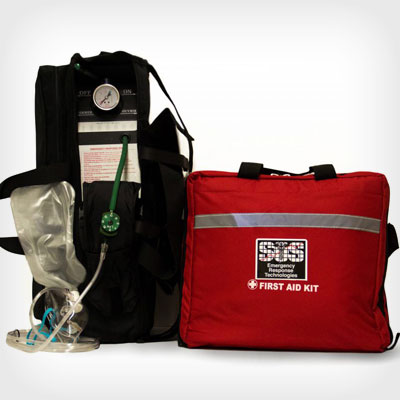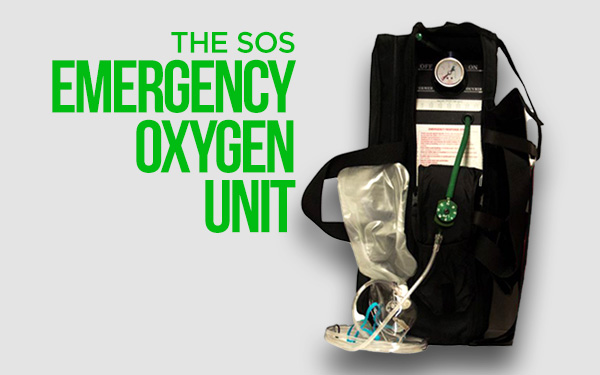
Uncategorised, Blog
While emergency oxygen may not mandatory in the workplace; when EMS first responders arrive at a major event the first thing they do is give oxygen. Having emergency oxygen on hand prepares you to turn an life altering emergency event into a lifesaving situation.
In the case of a heart attack and/or stroke the heart muscle does not receive blood and therefore, is not receiving any oxygen. If efforts are made early in the course of a heart attack to increase the amount of oxygen reaching the heart, then the patient’s chances of surviving increase. By supplying the patient with supplemental oxygen we can increase their chance of survival and quick recovery.
FACT: During an emergency, lay rescuers need a simple straightforward design in order to minimize the time necessary to start life-saving oxygen therapy. As the regulator is the main user interface it is important that is be as user friendly as possible.
FACT: SOS Emergency Response Technologies has the ONLY portable emergency oxygen unit with a two stage regulator. It’s like having two oxygen regulators in one unit:
- Dependable
- Safe
- Accurate
- Superb performance
- Reliable
A primary factor to consider before implementing an oxygen program in the workplace is the cost of the equipment, training and service versus the cost of the human factor. Other factors to consider include the possibility of decreased sick time post injury/illness and enhanced employee to employee relations due to health and safety improvement.
Bottom line – emergency oxygen should be available in any safety conscious workplace – a life may depend on it.
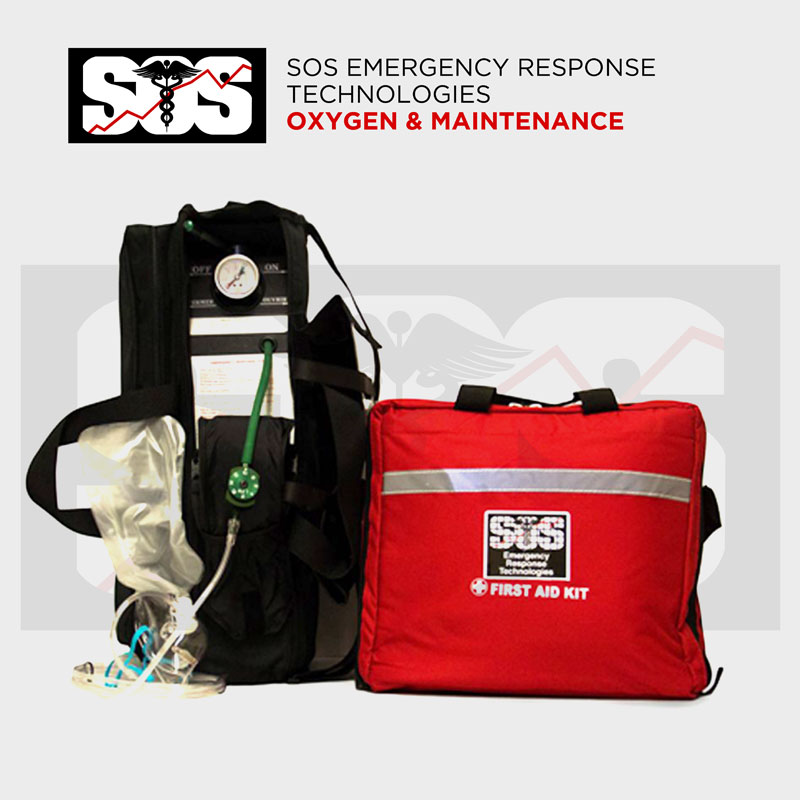
Blog
Although we originally posted this blog in 2014, we thought it was prudent to re-post in light of the earthquake near Christmas 2015.
Each year it seems we all rotate the same resolutions in order to achieve a longer life: eat healthier, exercise more or quit a bad habit. All of these changes are controllable throughout the whole year, but what about unexpected events that can threaten your life? Unfortunately many people don’t think about emergency preparedness until they hear about a disaster that has happened somewhere else.
What if the disaster hits closer to home? Are you and your family prepared? Do you have an emergency plan?
Instead of recycling those usual and tired resolutions, this year make a resolution for you and your family to be safe. To help you out we at SOS Emergency Response Technologies have come up with 3 quick and easy steps to achieve this goal, so you can sit back and boast to your friends that you accomplished your resolutions for the year.
Step one – Check the batteries in your smoke detector.
Step two – Check your first aid kits. Take a look and see if any products are expired and need to be replaced. If you don’t have a first aid kit we recommend our General Purpose First Aid Kit FK1021 $14.95.
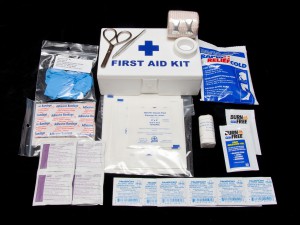
Step three – Check your emergency preparedness kit and update your emergency plan/contacts if needed. If you use bottles of water they have to be replaced yearly. Emergency Food Ration Bars and Emergency Sterile Water Packets last longer (5 years). Double check your contact lists to make sure it is up to date with current information and remind your family about the emergency plan you put in place. If you don’t have an emergency plan there are many sources on the internet. These days we find ourselves working and running errands at all hours of the day so the chances of your family being split up when a disaster hits are larger. Make sure you set a meeting point.
If you don’t have an emergency preparedness kit SOS Emergency Response Technologies has a variety of options to choose from. We have kits for 1, 2 and 4 person families and have economical versions as well.

That’s all there is to it! Although, there are a few extra steps you could take to make sure those around you are safe as well. Ask the human resources team if your workplace has an emergency plan as well as emergency kits. If you are on the safety committee make a point to bring it up at the next meeting and set up an emergency plan for your work place. SOS Emergency Response Technologies can also provide emergency preparedness kits and products for your workplace.
Blog
Are you ready for a severe emergency? Many businesses are not adequately prepared and as a result 40% of businesses affected by a major emergency or disaster never reopen.
It is tempting to believe that accidents and emergencies will never occur at your workplace, but the reality is that emergencies can occur anywhere, any time. And the fact is that most businesses just are not adequately prepared. A 2013 emergency preparedness survey conducted by Staples found that less than half of employers report being prepared for severe emergencies, and nearly 40 percent said their small business does not have emergency safety training or drills.
But according to Bob Risk, senior strategic safety, health, and preparedness manager for Staples, “It’s much easier to prepare for an emergency than to explain why you didn’t.”
The heart of your preparation is an emergency action plan (EAP) that covers the actions the company and employees must take to ensure safety in a crisis. You should train employees on the EAP as you would train them on any safety or health program. Frequent practice drills are an important part of ongoing emergency training.
Once employees are familiar with the basic procedures to follow in an emergency, it can be beneficial to introduce obstacles into your drills that mirror unforeseen circumstances that could occur during a real emergency. For example, force employees to use an alternate exit route, or plan for some key personnel to be absent so that their backups get a chance to practice their emergency duties.
And in order to succeed, an emergency plan must also be embraced by employees. After all, incidents don’t discriminate, and when an emergency hits, the impact is not limited to managers and safety committee members. No matter what type of workplace emergency your company may face, you can be prepared to respond effectively and help protect employees, property, and resources. Don’t wait for disaster to strike – take action now and put an emergency plan in place.
Call SOS Emergency Response Technologies today 604.277.5855 and one of our Health & Safety Consultants can help you prepare. Our staff can consult on your WorkSafeBC first aid requirements, safety needs and/or earthquake preparedness interests.

Blog
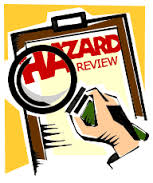 WorkSafeBC inspectors may suggest that they are just trying to “get the facts,” but every question they ask is designed to get the evidence they need. You should always be on your toes and follow the military maxim, “Never volunteer.” Inspectors are like TV interviewers. They’re trying to get the information they need, and they know that you are unlikely to volunteer anything that will be damaging to your case. As a result, they resort to indirect questions. Furthermore, they often phrase these questions carefully, trying to make it look as if you are being given a chance to exonerate yourself, or justify questionable procedures.
WorkSafeBC inspectors may suggest that they are just trying to “get the facts,” but every question they ask is designed to get the evidence they need. You should always be on your toes and follow the military maxim, “Never volunteer.” Inspectors are like TV interviewers. They’re trying to get the information they need, and they know that you are unlikely to volunteer anything that will be damaging to your case. As a result, they resort to indirect questions. Furthermore, they often phrase these questions carefully, trying to make it look as if you are being given a chance to exonerate yourself, or justify questionable procedures.
Dealing with safety inspectors requires balance and common sense. Never lose sight of the fact that they are professionals, and that they are looking for information that may not make you or your company look good. On the other hand, inspectors are doing an important job, helping to protect the health and safety of your employees.
Keep the following guidelines in mind:
• Never be rude. Even when you think that you should not cooperate, be polite, but firm. Personal animosity will only make a bad situation worse.
• Be cautious. Never volunteer anything. Never grasp at an opportunity to put yourself or your employer in a good light. Why not? Think about it. How often have you listened to people talk themselves out of a job by responding too carelessly to your carefully crafted questions? The same could be true in this case. Choose your words carefully.
• If in doubt, you can refuse to answer a question. In most cases, you can ultimately be compelled to respond, but many times the matter will not be pursued. If it is, you’ll have time in the interim to consult with counsel as to the best approach.
Don’t
• Demonstrate any activities or operations for the inspector
• Volunteer any information
• Volunteer any records not requested
• Make any admissions of guilt
Do
• Designate one qualified, knowledgeable person to be the liaison with the inspectors, and train the person accordingly
• Examine a warrant carefully
• Duplicate the inspector’s tests and actions
• Indicate trade secret area
• Prepare, with the help of counsel, a standard operating procedure for handling inspectors
• Conduct your own safety audits regularly, making sure that this important “quality control” element is part of your compliance program


